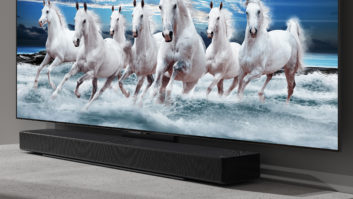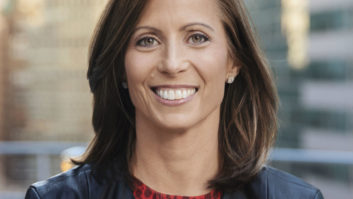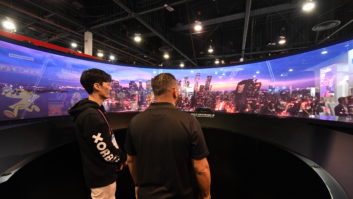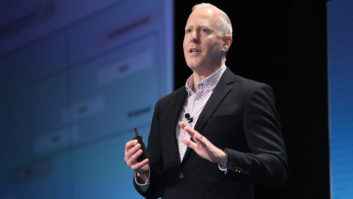With people living longer and wanting to have a better quality of life while remaining at home in their later years, using technology to provide virtual care and improve independent living is a topic that is on more people’s minds. At CES 2023, “Virtual Care and Independent Living: Keeping Seniors Safe” brought together a panel of experts to discuss the senior and caretaker market, highlighting the role of technology like Personal Emergency Response devices (PERs) and independent living solutions, and look ahead to how things can be improved.
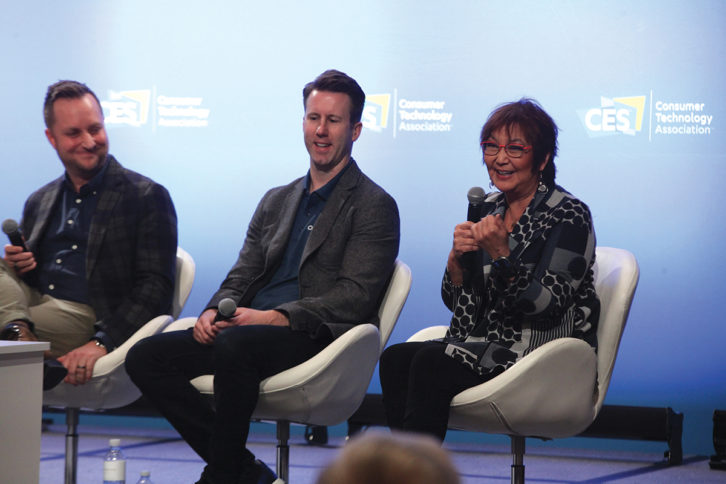
The panel included Yaniv Amir, president of Essence USA, which is a market leader in security and healthcare; Steve Burger, president and co-founder of Aided, a provider of comprehensive monitoring solutions and aging-in-place concierge services; Joshua Di Francis, head of incubation at LG Electronics’ Silicon Valley innovation lab where he is helping LG expand into new areas including healthcare; Daniel McCaffrey, VP of digital health and software at OMRON Healthcare, a company that has been in the remote monitoring space for 50 years; and Charlotte Yeh, chief medical officer of AARP Services.
The panel was moderated by Kristen Hanich, director of research at Parks Associates, and focused on the trends in home healthcare, what role virtual care plays and how services will come together in the future.
According to studies, the top five current caregiving solutions includes PERs and medical alert devices, smart speakers and displays, home sensor systems, smart watches, and DIY smart home device solutions. During the pandemic, 36 percent of people aged 65-plus reported using telehealth services, which was a vast increase of the 6 percent used in 2019, proving that awareness is growing in this category.
According to Amir, as seniors become more active, mobile PERs become really important. People are looking for wearables that can give wellness information along with panic solutions, like watches, and they are seeing bigger companies going into health solutions, like Apple Watch with fall detection, Amazon with passive fall detection and Alexa being a conduit to a call center.
Yeh noted that historically PERs were designed for old people, and no one wants to admit to being old. For these devices to succeed, they need to be designed for all, not just for older people. “Where is the joy, the laughter, the connection?” she asked. “Why are there no hearing aids that look like blingy earrings or that translate 25 different languages so you can travel? Where is the fashion and the fun? We need to bring that in so we’re not worried about safety, but thinking about having fun and thriving.”
Burger said his company looks at this from the total family aspect. Caregivers/adult children are often caught in the middle, and they are “the sandwich generation”—caring for their own family along with parents.
McCaffrey said it can be difficult to get seniors to adopt a new technology, and that the technology community needs to get creative and collaborate to find products that will work and have adoption. Though he is encouraged about patients going to doctors and asking about things like FitBit or Apple Watch, which offer remote monitoring. “We have to rise to the occasions as healthcare companies and offer similar experiences.”
Burger stressed that caregivers and technology need to make sure parents aging in home are healthy, safe and comfortable, but, as needs change and as health declines, it has to be able to shift over to seamlessly incorporate other devices.
Amir mentioned tracking things like when did mom wake up this morning, did mom eat today, is she wandering in the middle of the night? “These are all important data points to collect.” But it is hard for a single company to collect all this data, and we need data aggregation between multiple companies.
There is also the cost of healthcare, which can cause both financial and emotional strains on the family. Burger mentioned a caregiver could expect to spend around $10,000 per year and put in 1300 hours of work, whereas assisted living can cost between $4500–9000 per month. “Eventually we’ll all be part of the end users someday, so we have to get this right.”
Yeh said people should think about the home being ready. “What are the safety formfactors that can be done in the home?” By making the home safer, we’re not doing fall detection, but actually preventing the fall.
Di Francis noted that $265 billion is expected to move from the clinic to home in 2025. “People want to age in place—it’s going to happen.” LG is focused on living well and helping people live a better life, and the company has developed a strong, connected eco system. “Virtual care is expanding and those opportunities are super ripe right now, and we’re looking on how we can add value.”
Yeh pointed out that another real problem is the perception of aging, with 40 percent of people having a negative view of aging. “Older people are often shown negatively in media, and these pervasive images reinforce negative thoughts of aging, and this needs to be changed.”
“We want monitoring that allows people to stay mobile, out in the community,” Yeh said. “It’s not aging in place; I call it thriving in motion.”

